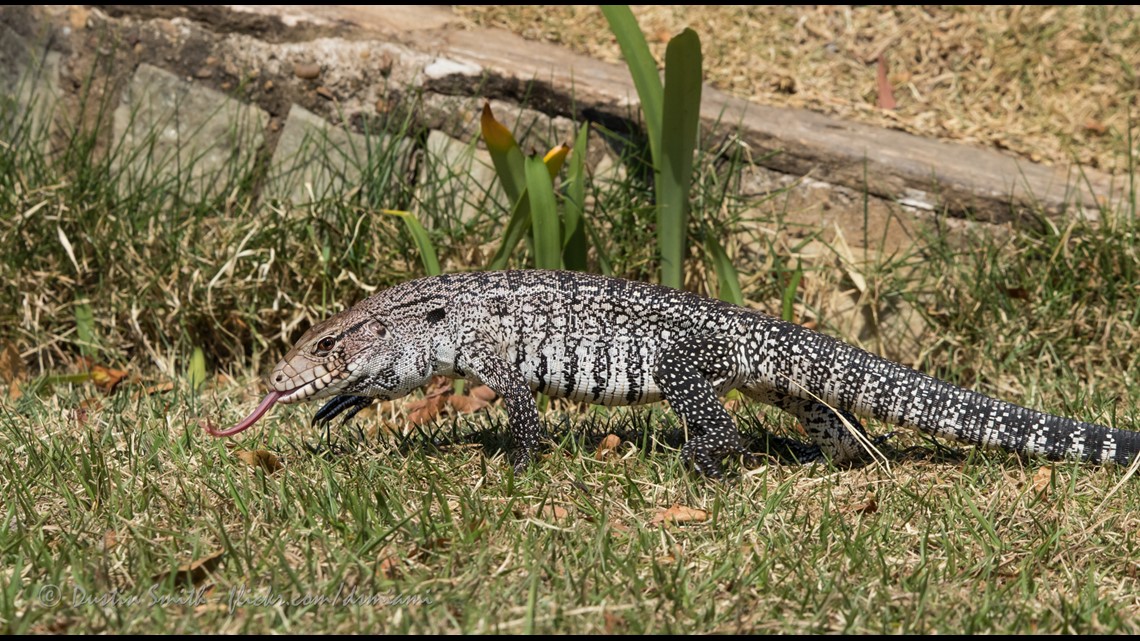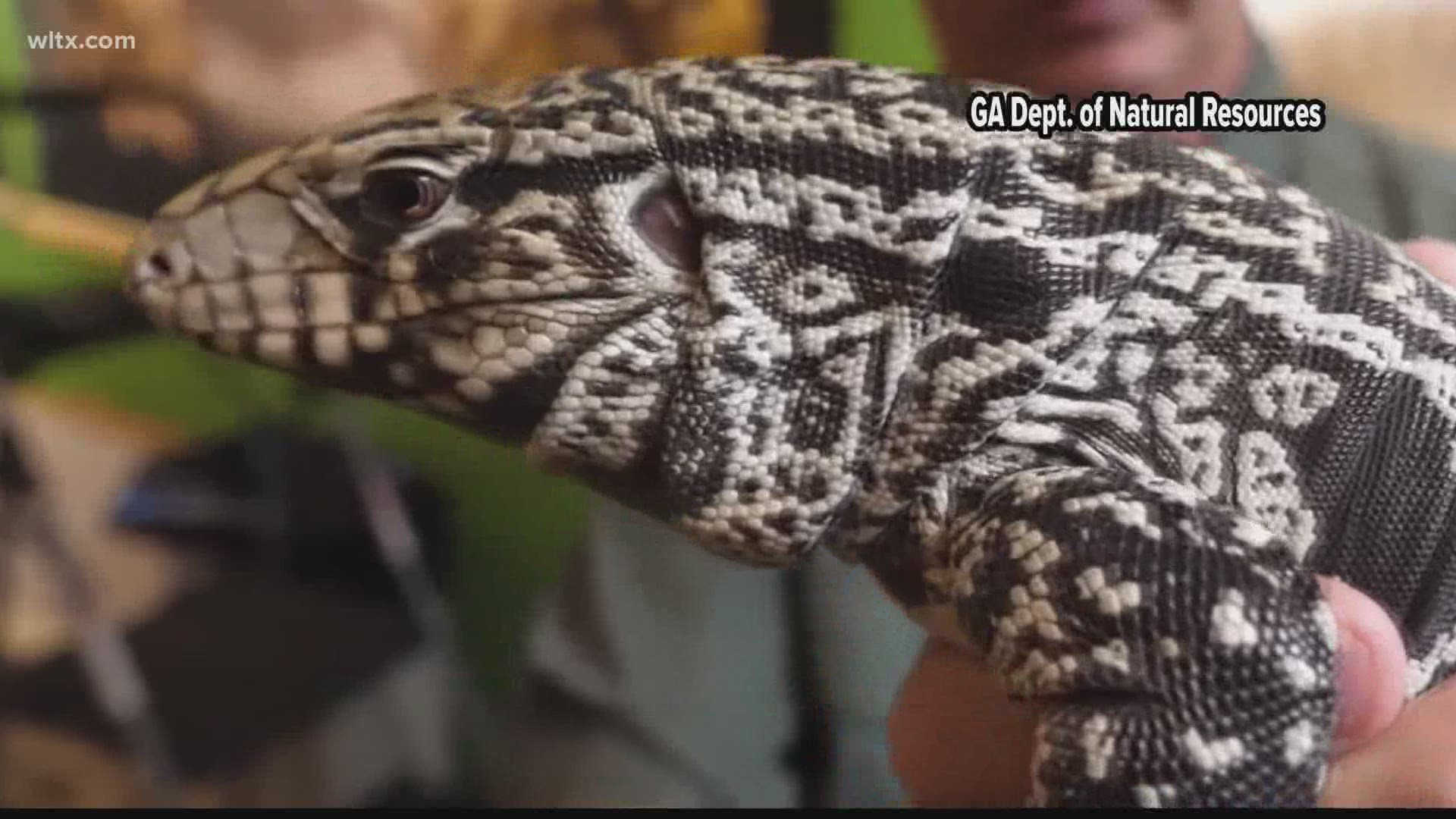COLUMBIA, S.C. — An Argentinian lizard usually kept as a pet has made its way to the Midlands.
The lizard, considered an invasive species, has been seen in Georgia and Florida, as well.
According to the S.C. Department of Natural Resources (SCNDR), a Black and White Tegu Lizard sighting has been confirmed in Lexington County.
The reptile can be up to four feet long and weigh more than 10 pounds. It is omnivorous, and according to SCDNR, can cause harm to our native ecosystem.
Andrew Grosse is SCDNR's state herpetologist, or someone who studies amphibians and reptiles.
“We’ve seen them become established in Florida and Georgia likely from pets that were released or able to escape," Grosse said.
Grosse said they’ve been monitoring the situation in South Carolina and getting advice from Florida and Georgia.
RELATED: 'Voracious' invasive lizard species found in Georgia should be 'shot on sight,' wildlife group says


"Their advice was to get as much information as you can as quickly as you can because if you can stop them from becoming established, that’s obviously better than allowing them to become established. We don’t fully understand what kind of impact they can have on our native wildlife, but introducing a large predator like that – we know it could impact a lot of our native species.”
Tegus are voracious omnivorous lizards that eat a variety of prey, including birds, small mammals, reptiles and amphibians, fruits, vegetables, insects, and eggs.
The Argentinian lizard is popular in the pet trade, and SCDNR thinks that could be how they have started to appear in the state.
“What we’re trying to do is to gain as much information on where people are seeing them, if they are seeing them, if they are established we want to know about that and if there’s just a few of them then we want to know about that as well," Grosse said.
If you see one and feel comfortable getting a photo, you can email it to Grosse at grossea@dnr.sc.gov. Make sure you include the date, time and location.


